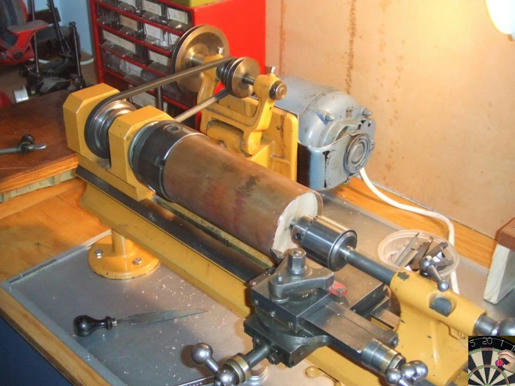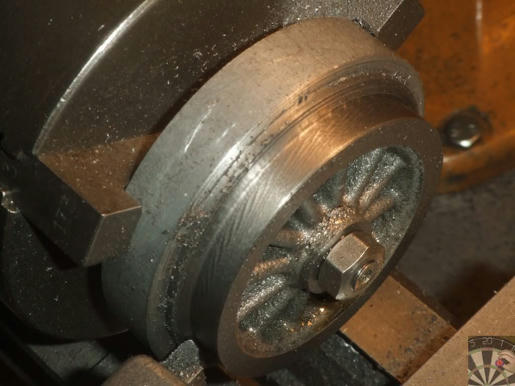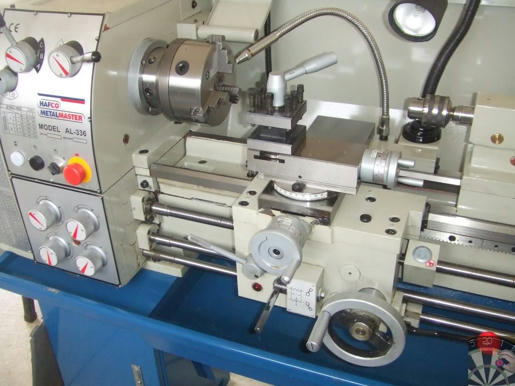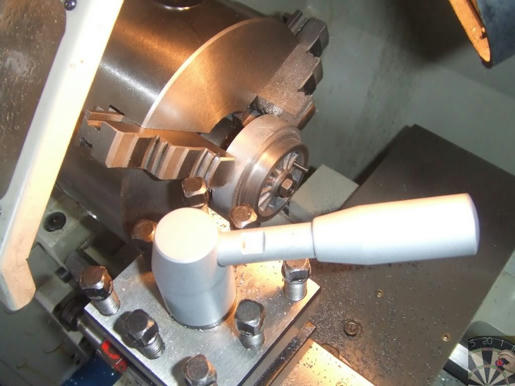- Joined
- Mar 1, 2010
- Messages
- 865
- Reaction score
- 82
I'm making my Northumbrian locomotive serialized in ME in 2009/10. I've got to the point of doing the wheels and got stuck with the limitations of my equipment. I only have a small lathe, a 1930's Lorch that has seen a bit of service over the years. Its a clockmakers lathe, although I've managed to to everything I've wanted to up to now. I've even faced off the ends of my boiler barrels with it.

However machining the cast iron wheels for my loco I just couldn't stop the chatter when doing the treads.

I knew it was a rigidity problem I did everything I possible could to get it sorted, , sharpened the tool, shortened the tool overhang, slowed the speed to the lowest I could achieve, tighten the gibs to the point I could just about turn the hand wheels. Whatever I tried didn't work, and I was running our of metal on the wheel to mess with. I'd leave it for days come back and hope a fresh start would achieve results. I had six of the wheels to do and couldn't afford to stuff one up. The lathe was out of action for this period as I couldn't remove my mounting arbour/jig otherwise I'd have to make another because I'd never get it back into alignment if I removed it from the chuck.
Then I had a flash of inspiration and fixed the problem........

;D There are many ways to skin cats but chucking $ at the problem is sometimes the only way to go. ;D
It arrived Thursday and Murry helped me unpack it and we installed it on Saturday. Its a 600Kg (1320lb) so took a bit of maneuvering to get it in place. A clean up of all the gunk today and the wheels were finished in no time at all.

One happy chappie
Pete

However machining the cast iron wheels for my loco I just couldn't stop the chatter when doing the treads.

I knew it was a rigidity problem I did everything I possible could to get it sorted, , sharpened the tool, shortened the tool overhang, slowed the speed to the lowest I could achieve, tighten the gibs to the point I could just about turn the hand wheels. Whatever I tried didn't work, and I was running our of metal on the wheel to mess with. I'd leave it for days come back and hope a fresh start would achieve results. I had six of the wheels to do and couldn't afford to stuff one up. The lathe was out of action for this period as I couldn't remove my mounting arbour/jig otherwise I'd have to make another because I'd never get it back into alignment if I removed it from the chuck.
Then I had a flash of inspiration and fixed the problem........

;D There are many ways to skin cats but chucking $ at the problem is sometimes the only way to go. ;D
It arrived Thursday and Murry helped me unpack it and we installed it on Saturday. Its a 600Kg (1320lb) so took a bit of maneuvering to get it in place. A clean up of all the gunk today and the wheels were finished in no time at all.

One happy chappie
Pete




